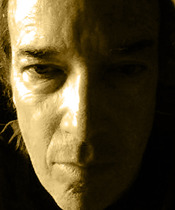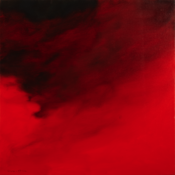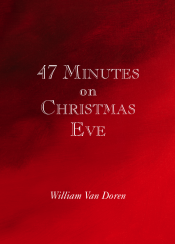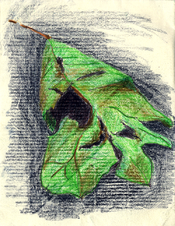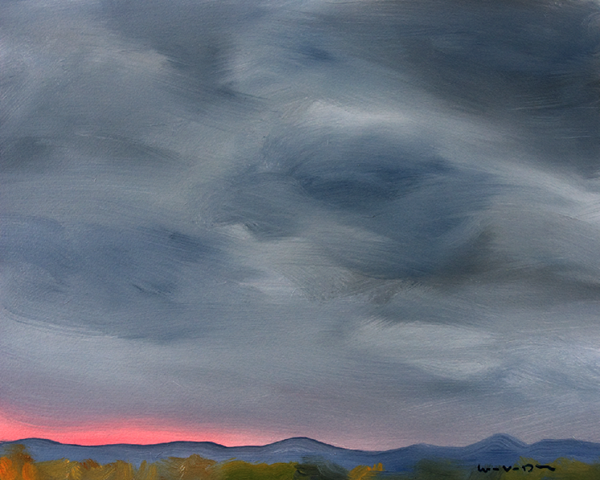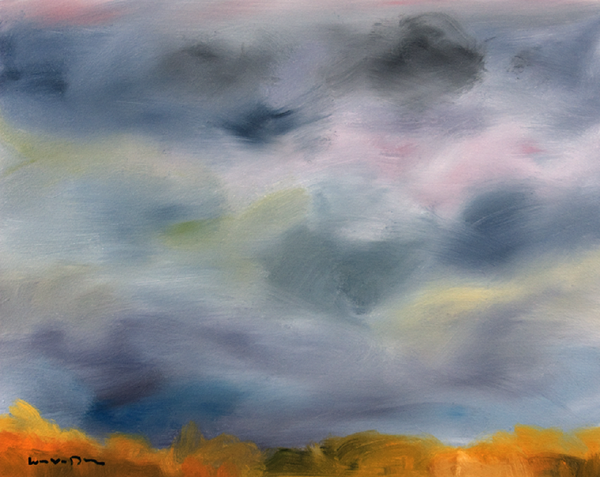Edgar Allan Poe’s Island of the Fay (and A Sunset of the Seventh Ray)
Just as Edgar Allan Poe begins his beautiful fantasy “The Island of the Fay” as if it’s a critical essay, I will begin my own little fantasia as if it’s a critical essay ... on “The Island of the Fay.”
What goes around comes around.
Poe’s story is quite short (out of five or six places where you can read it online, the best presentation seems to be here), but, as is often the case with Poe, it includes elaborate arguments or conceits that aren’t absolutely necessary to the main action, and which Poe himself may not even have believed. I think at times he may have simply enjoyed exercising his fantastic intellectual and creative powers for their own sake – dazzling us with a song and dance, for fun, not to mention for the purpose of completing a story and getting closer to another payday.
Anyway, after the preliminaries – which, by the way, do relate to his story – Poe tells us:
It was during one of my lonely journeyings, amid a far distant region of mountain locked within mountain, and sad rivers and melancholy tarn writhing or sleeping within all – that I chanced upon a certain rivulet and island.
The time of day – sunset.
Poe lies down in grassy woods watching the light fall along this little river. On the shadow side, the river, or rivulet, bends out of sight into deep green foliage. On the sun side,
there poured down noiselessly and continuously ... a rich golden and crimson waterfall from the sunset fountains of the sky.
He begins to notice a small island in the middle of it all. It lies east to west, so one end is in deep shadow, the other in the beautiful light. Poe plays up the duality, elaborating, embroidering on how delightful is the light – imbued “with a deep sense of life and joy” – and how black and gloomy the shadow – it even suggests “mortal sorrow and untimely death.”
Now Poe’s ‘fancies’ really kick in. As the sun lowers, he begins to suppose that the trees on the mournful eastern end are literally giving their shadows to the ever-darker waters flowing off to the lee of the light.
I fancied that each shadow, as the sun descended lower and lower, separated itself sullenly from the trunk that gave it birth, and thus became absorbed by the stream; while other shadows issued ... from the trees, taking the place of their predecessors ...
He makes a leap to the idea that this secluded place could be the last remaining home of the race of fairies, or “the Fays,” and that the Fays give up their lives much as the trees give up their shade.
In dying, do they not rather waste away mournfully, rendering unto God, little by little, their existence, as these trees render up shadow after shadow, exhausting their substance unto dissolution?
At this point, Poe transforms a curled piece of sycamore bark floating past into the image of an ethereal Fay standing “in a singularly fragile canoe,” which she guides “with the mere phantom of an oar.” This vision develops into the story’s ultimate image – the Fay going round and round the island, starting out in sunlight and joy, but with each revolution giving up part of her life to the black shadows of the river, and so seeming weaker and more careworn every time she reappears. When the sun finally goes down,
the Fay, now the mere ghost of her former self, went disconsolately with her boat into the region of the ebony flood, and that she issued thence at all I cannot say, for darkness fell over all things and I beheld her magical figure no more.
I encountered this story as I set about to read all of Poe’s collected works; I have a long way to go, so I can’t say how this story will appear in full context, but so far it seems striking for the strength of its attraction to brightness, happiness and sunlight. I think those who look at the story analytically must see predominantly the outcome of shadows and death – another dark tale by Poe. But a simple emotional reading – taking the story’s temperature, as it were, instead of just looking at the skeleton – tips the balance toward light and life. Poe doesn’t stint when he describes the bright end of the island as
all one radiant harem of garden beauties. It glowed and blushed beneath the eyes of the slant sunlight, and fairly laughed with flowers. The grass was short, springy, sweet-scented, and Asphodel-interspersed. The trees were lithe, mirthful, erect – bright, slender, and graceful, – of eastern figure and foliage, with bark smooth, glossy, and parti-colored. There seemed a deep sense of life and joy about all; and although no airs blew from out the heavens, yet every thing had motion through the gentle sweepings to and fro of innumerable butterflies, that might have been mistaken for tulips with wings.
The Fay’s disappearance into the darkness is sad, and the sadness registers all the more strongly because of Poe’s lyrical celebration of the beautiful light of sunset in the woods and his tender affection for the Fay’s gentle radiance.
The ending is explicitly ambiguous (curious phrase) as Poe can’t tell what happens to the Fay. Sunset plays a key role; it’s pretty simple; he can’t say what happens because the sun goes down and everything’s dark.
Maybe I can help.
As the sun goes down behind the mountains, the range we see could be a rugged island in the distance. We don’t need a circling Fay to register the dying of the light; we can see it directly.
Odd thing: When the sun is higher and the light brighter, the rays of the setting sun are less colorful. As the sun goes down, and darkness approaches, the colors of the sun become that much more intense.
It’s a little difficult on an evening so low and heavy with clouds, but we can imagine dividing the sunset into seven rays.
The first would be yellow, for the sun itself. The second ray is a white-gray light, for the clouds. The third is blue, for the air. The fourth another blue, for the waters. The fifth is a flaming red-violet rose orange, for all the hopes and dreams of everything that exists. The sky, often a beautiful bright green near the horizon at this time of year, only rarely shows us the mysterious sixth and penultimate ray – the so-called ‘green flash’.
The seventh ray – that’s the one we never see, at least not on this side of the mountains. The seventh ray might complete the Fay’s mysterious sunset. Perhaps the shadows grow darker not from absorbing other shadows, as our friend supposed, but from taking in all the light. The rays represent the light that night seals into itself. The seventh ray, the brightest light, darker than any midnight, brings tomorrow’s morning sun.
 Friday, October 30, 2009 at 07:05PM | by
Friday, October 30, 2009 at 07:05PM | by  BVD | in
BVD | in  Prose,
Prose,  Sunsetology | tagged
Sunsetology | tagged  Edgar Allan Poe,
Edgar Allan Poe,  seventh ray,
seventh ray,  “The Island of the Fay” | | Comments Off
“The Island of the Fay” | | Comments Off 
